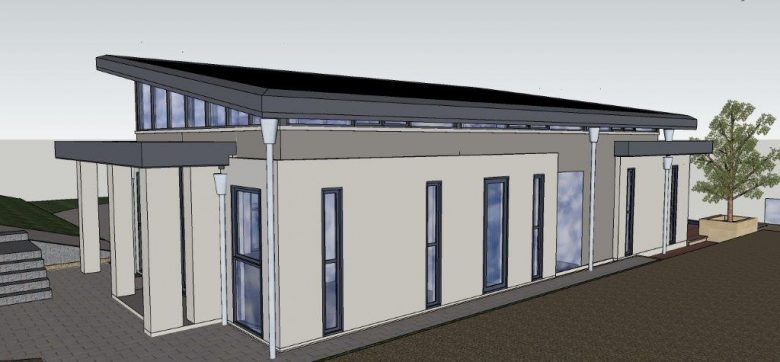Solar Roof Energy Production:
In my last post I summarised the Solar Roof and Pool project designed by my Adelaide Architectural firm. In this post I will supply some benchmarks and figures and that we are expecting to achieve.
Solar Roof Background:
As an Architect, both function and aesthetics are important to me. Solar PV cells retro-fit to a roof are almost always exceedingly ugly. An Australian company, Tractile, has developed a large size roof tile that has solved this problem by integrating the PV system into a roofing system. Tractile is made from composite materials and is integrated, with solar PV on top of the tile and solar heat exchange on back of the tile. It comes in 3 types which can be mixed as required. These are a standard tile, a PV tile and a hot water tile. The PV tile also generates warm water as a by-product. A Tractile roof withstands cyclones and 65+ hail stones, generates electricity, provides hot water and improves insulation. A standard 5kWp Tractile PV system covers around 30 sq.m of roof, generating around 20 to 22kWh of power. If 10kWh battery storage is linked in to the system a power savings of around 90% of typical consumption is achieved. The Tractile roof on this project is focused on harvesting solar energy in the form of electricity and heated water for heating the house and pool. This is a world first as we are using only the PV tile and it will comprise the entire roof rather than just a section of it. We will be linking 2 Tesla Power walls (which can store 13.5kWh each) into the system for battery storage. Both the house and pool will be heated and powered by this roof.
Energy Calculations:
The proposed roof will comprise 240 Tractile Eclipse Solar Roof Tiles representing a 24 KW photovoltaic system and 134 square metres of solar thermal collector area (35% efficient solar thermal rating). Note that the Project’s roof area is around 160sq.m, but due to edge flashings and gutterings the collection area is smaller.
We estimate that this configuration will generate approximately: 36,500 kilowatt hours of electricity per annum and 8,600 kilowatt hours equivalent of heated water per annum. The heated water can be used for heating pool, spa, and hydronic floor heating. As a comparison an average Australian family of 4 will consume between 15 to 25 kWh of electricity per day. Even at the high end of consumption this is only around 9000 Kilowatt hours per year. In this project we will be powering not just the new Pool house, but the existing house located adjacent. Even with this added power load taken into account, at 18kWh we should be producing around double the power needed.



